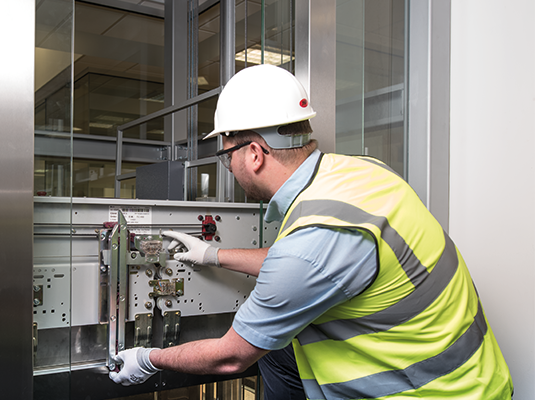In-Depth Elevator Service Plan Incorporating Troubleshooting, Modification, and Calibration
In the world of upright transportation systems, lifts play a critical role in ensuring efficient activity within structures. An extensive lift solution prepare that integrates calibration, modification, and troubleshooting is not just a routine upkeep routine; it is a comprehensive strategy to raising the performance and security criteria of these essential systems.

Significance of Lift Maintenance
Lift upkeep is a vital aspect of making sure the reliable and secure operation of a structure's upright transport system. Normal maintenance not only prolongs the lifespan of the lift but also minimizes the risk of unforeseen malfunctions, making sure the safety of occupants. By adhering to a structured upkeep plan, building proprietors and center supervisors can determine and address possible problems prior to they rise into major issues, therefore decreasing downtime and expensive fixings.
Regular upkeep jobs consist of lubing and evaluating moving components, testing safety and security functions, and changing mechanisms to keep optimal efficiency. Additionally, normal upkeep helps to make certain that the elevator adheres to security regulations and standards established by relevant authorities. Neglecting upkeep can cause malfunctions, such as sudden quits in between floorings, door problems, or electrical failures, all of which can inconvenience customers and jeopardize their safety and security.
Fixing Techniques for Lifts
Guaranteeing the effective and safe procedure of a structure's vertical transport system via normal maintenance additionally entails the application of efficient repairing techniques for addressing potential lift concerns promptly. Troubleshooting methods for elevators are critical to preserving a trustworthy lift service.
An additional crucial troubleshooting technique is performing a comprehensive physical assessment of the elevator elements. This involves monitoring for any type of signs of damage, loosened links, or unusual sounds throughout procedure. By visually inspecting the elevator machinery and electrical systems, technicians can recognize possible problems prior to they intensify right into significant issues.
In addition, fixing techniques for lifts often involve testing various safety and security functions, such as emergency brakes and door sensing units, to guarantee they are operating properly. Regularly checking these safety and security mechanisms can assist avoid crashes and make sure traveler safety. By integrating these repairing techniques right into a lift solution strategy, structure proprietors can reduce downtime, decrease repair service expenses, and guarantee a smooth upright transportation experience for residents.
Accuracy Adjustments in Lift Solution
Applying exact modifications is vital in keeping the ideal performance and performance of elevator systems within a structure. lift engineers near me. Lifts are intricate mechanical systems that need thorough fine-tuning to make certain effective and smooth procedure. Accuracy modifications play an important role in enhancing safety, reducing downtime, and lengthening the life expectancy of lift parts
When carrying out precision changes in lift solution, technicians need to have a deep understanding of the system's mechanics and characteristics. Small discrepancies in leveling, alignment, or rate can result in substantial issues if not resolved immediately. By carefully adjusting specifications such as door closing times, leveling accuracy, and acceleration prices, service technicians can enhance the overall efficiency of the elevator.
Moreover, accuracy changes assist stop early deterioration on critical parts, such as cables, pulley-blocks, and control systems. Routinely arranged maintenance that includes fine-tuning changes can alleviate the threat of unforeseen failures and expensive repair services. Lift company need to focus on accuracy modifications as component of their thorough upkeep plans to promote the highest possible criteria of reliability and guest safety and security.
The Significance of Calibration Procedures

Calibration procedures additionally play an essential duty in extending the life expectancy of elevator tools. Routine calibration aids identify possible concerns beforehand, permitting prompt changes or replacements prior to major problems arise. This positive approach not just protects against pricey downtime yet additionally contributes to the general reliability of the elevator system.
Moreover, calibration is important for making sure conformity with industry guidelines and standards. By complying with producer referrals and sector best practices throughout calibration procedures, lift provider can assure that the system meets all essential safety demands. Appropriately adjusted elevators not only improve individual experience yet additionally show a dedication to passenger safety and security and building ordinance compliance.
Enhancing Elevator Efficiency and Longevity
To maximize elevator performance and prolong its durability, a thorough upkeep routine is imperative. Normal maintenance not only ensures that the elevator operates successfully however additionally aids in identifying potential concerns before they rise, consequently lowering downtime and costly repair services.
Additionally, applying contemporary innovations like IoT sensing units and predictive maintenance software program can give real-time data on lift efficiency, making it possible for anticipating maintenance scheduling and minimizing unforeseen break downs. Updating older lift systems with energy-efficient components can likewise add to improved performance and decreased power usage, causing cost financial savings in the long run. By focusing on regular upkeep, adopting brand-new modern technologies, and taking into consideration system upgrades, structure owners can substantially improve lift performance and lengthen its lifespan, making certain smooth operations for residents and visitors alike.

Final Thought
By implementing fixing strategies, precision changes, and calibration procedures, elevator solution carriers can enhance the total performance of lifts. Investing in a thorough lift service strategy is vital for maximizing the life expectancy of lifts and ensuring smooth transport for constructing occupants.
Fixing strategies for elevators are critical to maintaining a trustworthy elevator solution.Moreover, executing modern-day technologies like IoT sensors and predictive upkeep software application can offer real-time information on elevator efficiency, making it possible for anticipating maintenance organizing and decreasing unexpected failures (food lift name). By focusing on regular upkeep, taking on brand-new technologies, and thinking about system upgrades, building proprietors can dramatically enhance lift performance and prolong its life expectancy, guaranteeing smooth procedures for owners and site visitors alike
By carrying out troubleshooting methods, precision changes, and calibration processes, elevator solution providers can enhance the general functionality of elevators. Investing in an extensive lift solution plan is vital for optimizing the life-span of lifts and ensuring smooth transportation for constructing owners.